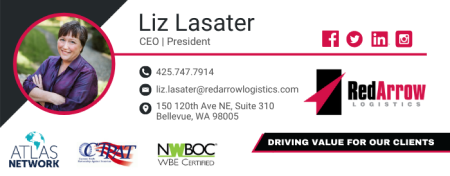As the e-commerce market segment grows, so does the need for a reverse logistics plan. The tracking of aftermarket activities, or reverse logistics, can provide insight into your logistics management overall. Reverse logistics helps anticipate and manage aftermarket issues and is effective in improving supply chain management and overall business performance.
What is Reverse Logistics?
Reverse logistics, or the management of returned goods, is an important part of a business’s supply chain. Retailers often consider a product’s supply chain to be finished when it is purchased or received by the customer. However, when a customer returns or exchanges a product, it re-enters the supply chain.
Reverse logistics is the process of taking products back from customers and reworking those products so that they can be resold. It is a value-added process that handles how a business receives items back from customers, for example when a customer makes a return. If the item is broken or unusable, it may need to go backward in the supply chain in order to be sellable again.
Reverse logistics is becoming a more critical component of the supply chain: Almost one-third of all online purchases are returned, however, 57% of retailers say that handling these returns disrupts their day-to-day operations. As an increasing number of purchases are made online, businesses need to develop a reverse logistics strategy.
How Reverse Logistics Improves Your Supply Chain
Having a reverse logistics strategy in place can benefit your supply chain in the following ways:
- Streamlines Inventory. Not knowing what is going on after products sell usually results in too much inventory, which can be costly to store. Reverse logistics data will indicate how much inventory is needed to meet replacement needs.
- Optimize Pricing. The cost of warranty repairs and replacements is reduced with reverse logistics management because the data will help identify the per-unit average of these activities.
- Reduces Costs. The cost of returns can eat away at margins. Logistics strategies are aimed at controlling the cost per item returned as well as transportation and warehousing costs.
- Increases Visibility. Logistics technology can be used to increase visibility throughout the supply chain and eliminate some of the risks involved with returns.
- Improves Customer Experience. Today’s customers expect responsive service. Customers will only tolerate product issues if exceptional service is given when something goes wrong. Reverse logistics management allows you to give your customers the experience they expect.
Overall, improved reverse logistics translates to increased productivity, enhanced customer experience, and better market standing.
Creating a Reverse Logistics Program
If your company does not already have a process to deal with returns, it is time to create a reverse logistics program. The goal of the program should be to recover as much value as possible from returned or damaged products. At the same time, reducing the transportation and warehousing spend for these products helps to improve margins. Returned products should be tracked closely utilizing technology systems specifically designed to provide real-time information.
When an item is returned, there are several options for how to handle that product. Liquidation methods to be considered include private auction platforms, which increase the recovery rate, and a direct sales model, which is working with a single liquidator to leverage relationships. Recycling or resale is another way to get value on returns.
The Importance of a Reverse Logistics Strategy
The way in which a company handles its returns is important to its reputation and customer base. Returns are becoming part of the way in which customers evaluate companies they purchase from and whether or not they will purchase again in the future. For example, a customer that makes a return for a damaged product and receives outstanding customer service will be more likely to purchase from that company again. On the flip side, returns that are not handled correctly can have a negative effect on a business and harm a company’s reputation.
Working with a logistics expert can improve your reverse logistics strategy. Red Arrow Logistics can help you create a return management plant that uses data points to develop a process that improves your supply chain operations.
Your Trusted Partner
At Red Arrow Logistics, we provide expertise and white glove customer service with fast-growing, complex, and high-value supply chains. As the next-generation model of logistics companies, we offer tailored transportation and logistics solutions — from single shipments to complex over-dimensional and international orders.
Red Arrow offers the scale and scope of services including air, ocean, and ground transportation to meet the budget and schedule requirements of the largest and smallest companies alike. If we can be of assistance, please email us at info@redarrowlogistics.com or give us a call at 425-747-7914.





